When you envision your dream bathroom, no doubt you will envision an amazing bathtub in it. Bathtubs are amazing, they do a lot of hard work in the home, not just facilitating cleaner members of the family but also facilitating cleaner pets. A tub is also a place to relax, unwind, travel in thoughts, and take an immersive soak.
There are various types of bathtubs to choose from for your home, and each type has several unique purposes. That said, choosing the right bathtub for your home is a very important decision, you want just the best for you and your family. Below, I will highlight some of the most common types of bathtubs along with the pros and cons to help you decide which is best for your home.
Types of bathtubs for your home
1. Free-standing tubs
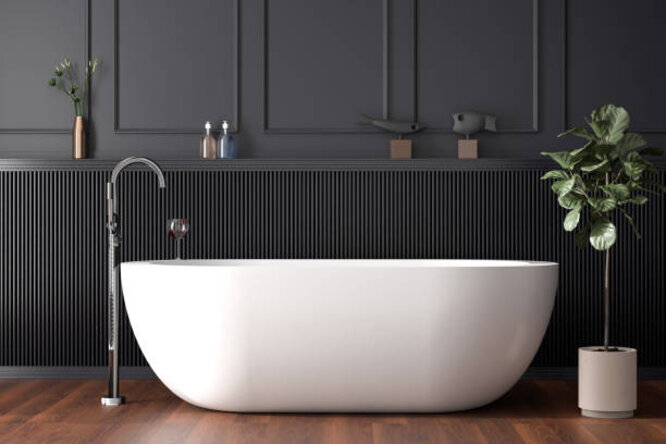
Free-standing tubs date back a while but it is still common today. It is not connected or fixed to a wall, hence the name free-standing, rather, this type of bathtub is connected to the floor. They are best for spacious bathrooms, making the tub the focal point and offering a sleek modern look to the bathroom.
Pros
- Matches any home style or design
- Aesthetically appealing
- Different shapes and sizes are available
Cons
- Not budget-friendly
- Exposed plumbing
- Requires space, or else the bathroom may appear choked
2. Alcove bathtub
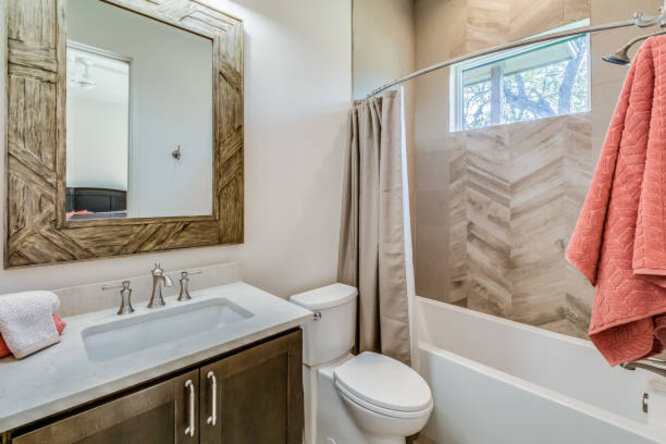
Alcove bathtubs or recessed bathtubs, are also very popular in the United States. They serve as a perfect alternative to free-standing tubs as they can be installed in smaller bathrooms. This type of bathtub is best for small bathrooms or tub-shower combination in order to save more space.
Pros
- Excellent space saver
- Very affordable
- Durable
- Customizable to achieve a high-end luxury look
Cons
- Must be situated on the side of the bathroom next to the wall
- Generic to the touch or feel
3. Drop-in bathtubs
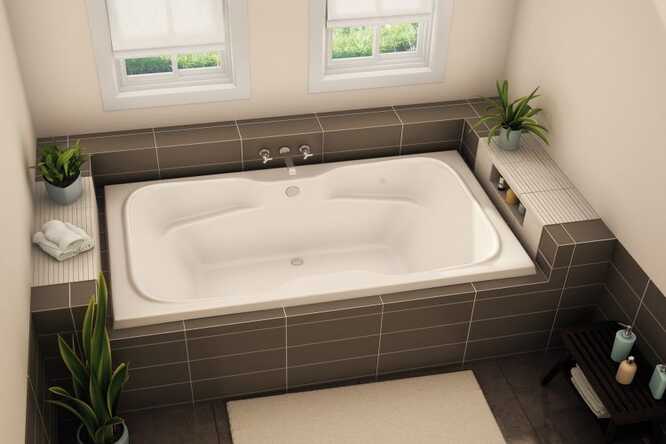
A drop-in tub is simply a tub that is dropped into an already-prepared deck. They are highly customizable and versatile in terms of size, location, and style. This type of tub is best for the end of the bathroom (as they can be built into alcoves) and as a bathroom centerpiece (just like free-standing tubs).
Pros
- Customizable
- High-end and luxurious aesthetic
- Deep soak functionality, making it very relaxing
Cons
- Requires a prebuilt construct for installation
- The installation might be tricky or complicated
4. Corner tubs
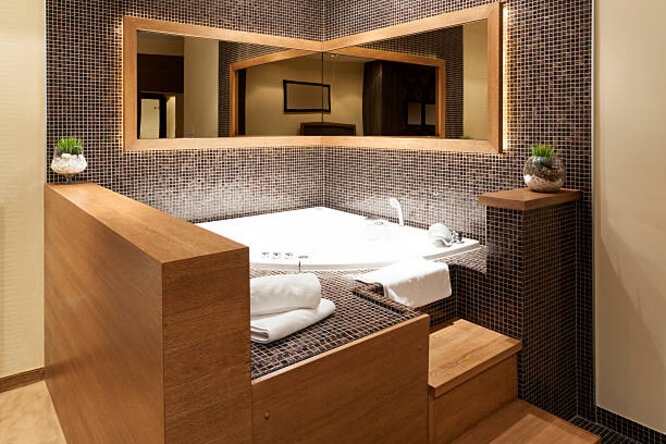
Corner tubs are large rectangular or triangular tubs that are installed in the corner of the bathroom. Compared to other types of tubs, corner tubs require more space and are often considered to be more of a relaxation tub than a bathtub. This kind of bathtub is best for spacious bathrooms with preferable high-end corners.
Pros
- Spacious and conducive for multiple users
- Provides a spa-like experience
- Allow elegant and interesting design options
Cons
- Requires a spacious bathroom
- Will likely use more water when compared to others
- Cleaning and maintenance tend to be more difficult
5. Japanese soaking tubs
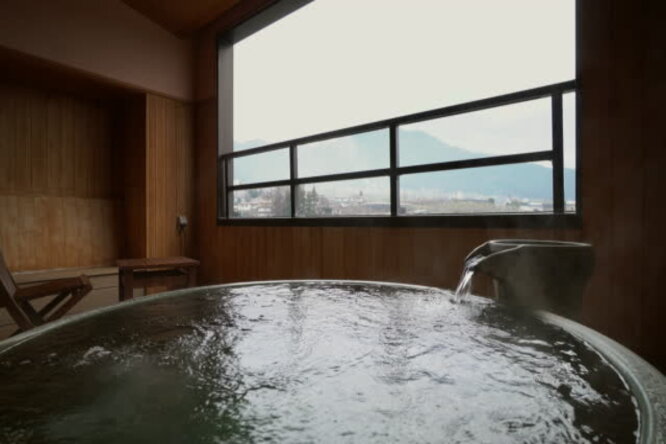
The Japanese soaking tub also term as Ofuro is slowly gaining popularity in the United States. It is a soaking bathtub that can hold more quantity of water (enough to immerse the entire body), making it a more relaxing and luxurious spa-like experience. This type of tub is suited for any shape or design of the bathroom.
Pros
- Breathtaking aesthetics
- Adds to the resale value of your home
- Offers deep soaking and relaxation opportunity
Cons
- This type of bathtub is not built to store essential items such as; shampoo, soap, conditioner, and other toiletries
- Not budget-friendly
6. Walk-in tub
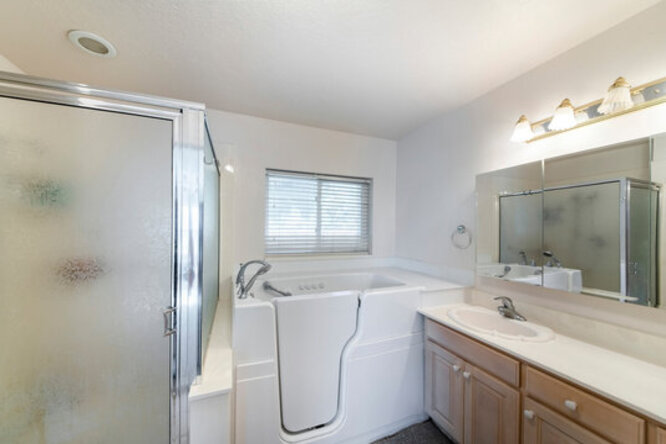
Walk-in tubs were built in an attempt to provide comfort for people with mobility issues. They are built with a simple door for easy access that helps seal the water in and a seat inside to provide extra comfort for the disabled or aged. This type of tub is perfect for those looking to save space but still want to enjoy the luxury of a bathtub.
Pros
- Safer (grabbing bars and swinging doors) for users
- You can add aromatherapy, chromotherapy lights, jetted massage systems, and other luxury features
Cons
- Price tends to be high (although this depends on the features added to the bathtub)
- Takes a while to fill and drain
7. Jetted bathtub
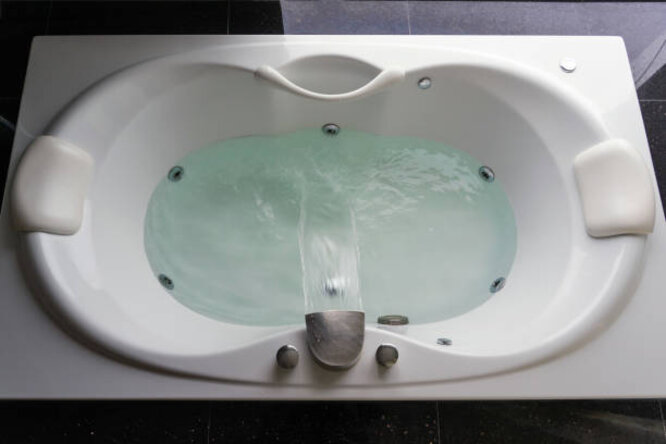
Jetted bathtubs or whirlpool tubs are designed with jets fitted in them. When you talk of tub relaxation, there are no beating jetted bathtubs. The continuous water jets provide a massaging effect on your body and are often recommended for joint and muscle pain treatment. This type of tub is suited for any bathroom with adequate space.
Pros
- Best relaxation tub
- Numerous health benefits through hydrotherapy
- It can act as a luxury feature in the home and increase the resale value
Cons
- Very expensive
- Requires regular maintenance
- Might increase your utility bill
FAQs
What are bathtubs made of?
Bathtubs are made of various materials, some of which are; Fiberglass, Acrylic, Cast Polymer, Cast Iron, Copper, and Stone.
Which bathtub material is best?
Cast iron is one of the best bathtub materials available on the market today because of its durability.
Which is cheaper, the shower or the bathtub?
There is a huge gap in the cost of buying and installing a shower compared to a bathtub. Buying and installing a shower generally costs less than buying and installing a bathtub.
Why is a bathtub better than a shower?
A shower’s main purpose is to clean your body, whereas bathtubs serve different purposes. Some of these include; relaxing the muscles, exfoliating the skin, stimulating the nervous system, etc.
Conclusion – Choosing the best type of bathtub for your bathroom
Choosing the right and affordable type of bathtub for your bathroom can prove to be a very tricky situation. However, we recommend first assessing the available space in the bathroom. If the bathroom is spacious a freestanding or corner bathtub should be conducive. And if you are on a tighter budget, a drop-in or alcove shower should suffice.
In terms of material, cast iron is arguably the best material for bathtubs as it retains heat and is very durable. However, acrylic and fiberglass can be good alternatives if you consider the cost of iron-cast bathtubs. If you are still confused or unable to decide, don’t fret, simply contact a professional to help guide you through the process of choosing the best from the various types of bathtubs for your home.
Thanks for reading.